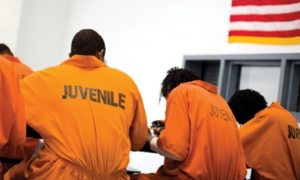Author(s): Gay, Lesbian & Straight Education Network (GLSEN)
- Ryan M. Kull, Ph.D.
- Joseph G. Kosciw, Ph.D.
- Emily A. Greytak, Ph.D.
Published: July 15, 2015
Report Intro/Brief:
“From Statehouse to Schoolhouse: Anti-Bullying Policy Efforts in U.S. States and School Districts, examines the anti-bullying policies of all 13,181 school districts across the country. It provides the prevalence of anti-bullying policies in all U.S. school districts and whether state laws and guidance are being implemented at the district level. In addition, the report explores whether district policies:
- Protect students specifically on the basis of personal characteristics, such as sexual orientation, gender identity/expression, race and religion;
- Require professional development for educators on bullying and district accountability for incident reporting; and
- Have an impact on school climate for lesbian, gay, bisexual and transgender students.
The report includes five major findings:
- The vast majority of school districts do not have anti-bullying policies that explicitly protect lesbian, gay, bisexual and transgender (LGBT) students. Only one in 10 districts has a policy that includes explicit protections for students based upon actual or perceived sexual orientation and gender identity/expression. Nearly three in 10 (29.5%) have no anti-bullying policy at all.
- Many district policies fail to align with state law. In states with anti-bullying laws, over a quarter (26.3%) of districts did not have district anti-bullying policies. In states with anti-bullying laws that explicitly protect students based upon actual or perceived sexual orientation or gender identity/expression, many district policies do not include the same protections (38.7% failed to include sexual orientation; 60.3% failed to include gender identity/expression).
- LGBT–inclusive district policies have a positive effect on school climate for LGBT youth. LGBT students in districts with LGBT-inclusive policies report greater feelings of safety and lower rates of victimization.
- Only two in 10 school districts require professional development for educators on bullying. Only two in 10 require district accountability for reporting of bullying incidents.
- Law and guidance at the state level strongly influence the presence and content of district policies. Having a state anti-bullying law doubles the likelihood that a district has an anti-bullying policy.If state policy guidance that gives districts a framework for creating its own local policies for schools includes explicit protections for students based upon gender identity/expression, the odds are 10 times greater that a district policy includes those protections. For state guidance that includes sexual orientation, the odds are two times greater that a district will include those protections in its local policy.”


























